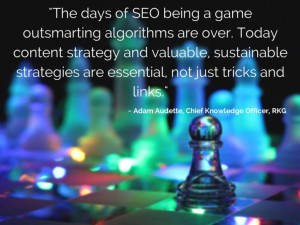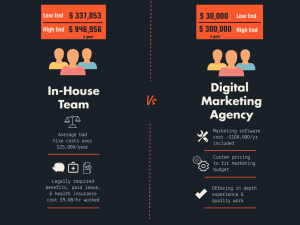Minimizing the amount of time you spend accessing and compiling data from your marketing technologies will give you more time to think about what’s really important, says columnist Katrin Ribant.

We all try to put our focus on the customer. Of course we do. But all marketers know that between them and the customer sits layer after layer of technology and reporting. The technology is needed to reach the right users with the right messages, and you need that reporting to learn how well you did it, so you can refine your approach.
As marketers for brands and agencies utilize an ever-increasing array of technologies, they can wind up further and further away from the people they are trying to reach. Analytics tools, programmatic retargeting and other mechanisms produce incredible data that allows for deeper targeting and segmenting of audiences, but when stacked upon each other they create new barriers to understanding users.
Adding new tools to our arsenal is essential if we seek to keep up with the changing marketing landscape and communications channels that are proliferating at an almost exponential rate. As this happens, we notice a slow creep: As it becomes increasingly complex, reporting takes longer. Every technology has its own interface, its own way of providing benchmarks, and its own specialties.
Naturally, we try to employ the best tool in each category that we can. The possibilities when you do, it seems, are endless. Each bit of marketing technology brings the promise of increased targeting, or increased understanding, and if you select the right ones, they usually deliver.
But with each layer of technology comes a layer of reporting. Disparate technologies require their own specializations and thus produce specialized reports. Facebook Analytics reports don’t jibe easily with Google Analytics reports. SalesForce data won’t jibe with retargeting data.
And while all of this data is useful, it winds up building newer walls that separate you from the most important element of what you do: the actual person who makes the purchase, clicks the link, or views the video.

This is why standardizing the reporting from these tools is perhaps one of the most important things a modern marketer can do. By minimizing the amount of time you have to spend accessing, compiling and revising data from your marketing technologies, you are giving yourself more time to spend making insights and, ultimately, thinking about the customer.
This gives us time to do what we do best: get creative with ways to reach customers, easily employing our tools as the need for them arises.
These three steps will help you optimize your ad management platform stack so that you may better monitor your marketing performance:
Keep Overlapping Technologies To A Minimum
If you are using several platforms that partially overlap — such as a DSP, a video DSP, a mobile DSP, an ad server, a video ad server, and a mobile ad server — ask yourself whether adding one more layer of hyperspecialized, best-of-breed, handling so-and-so technology offers a good cost-benefit ratio, or whether it will make it harder for your stack to operate. For example, you may want to decide between using a built-in feature in one platform, or using an additional platform instead.
If your ad server or your DSP handles retargeting, do you need a separate, specific ad management platform that specializes in retargeting? If this is your first time doing retargeting, the answer is almost certainly no.
A better way to go at it is to use the built-in, often free feature already available to you, and work out any limitations it may have. Then RFP (request for proposal) a specific platform only if you have a clear idea of what they should bring to the table, and how much ROI you expect from adding them to the mix.
Always remember that if you bring in an additional platform, native integration with your stack is a must.
Think About How You’ll Structure Your Campaigns In Each Ad Management Platform
The pressure to go live is always strong, but it’s never wise to say, “Let’s just set it up without thinking of the broader picture; we can always fix things later.”
One example I come across all the time is linking DSPs and ad servers. Some platforms natively integrate better than others. Leveraging these integrations in your set-up process by passing a linking key between both platforms will make your life much easier.
Another example relates to your processes. If you require classification of your performance by product or business line, for example, make sure that you work out a campaign structure that enables you to include these variables at levels that make sense across your entire stack.
Even if you can’t be consistent across platforms, you should make sure that you are at least consistent within one platform. That is, always target one campaign at one product, or always target one strategy at one business line.
When Choo
(350)







